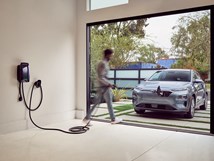Light Commercial EV Market to Grow
The factor for EVs in the commercial market is economics, not coolness
#hybrid #economics
Although the amount of attention given to things ranging from the Tesla Cybertruck to the Mustang Mach-E might make one think that the electric vehicle (EV) transformation of the auto industry is going to occur in the passenger-vehicle segment of the market, odds are it will be commercial vehicles.
This supposition is supported by a research study conducted by IDTechEX, “Electric Vans 2020-2030,” which assesses the probable uptake of electric light commercial vehicles (eLCVs) in China, North America, Europe, and the rest of the world over the next 10 years.

Earlier this year UPS ordered 10,000 electric vans from UK-based EV developer Arrival. (Images: Arrival)
According to IDTechEX, “The light commercial vehicle market is uniquely positioned to rapidly transition to electric vehicles.”
The reason: Companies that buy light commercial vehicles base their buying decisions on total cost of ownership (TCO), not just purchase price.
While, as the report indicates, the sticker price for an eLCV is higher than a comparable diesel model, the operational costs for the eLCV are lower than the diesel.
In addition, the research firm anticipates:
- Battery pack price decreases
- Electric drivetrain efficiency improvements
- Economies of scale improvements
All of which will benefit what is a still-developing segment.
Also, with the trend toward cities creating low emissions zones in their central business districts and charging fees based on the type of powertrain, the eLCV has an advantage over diesel.
Consequently, the IDTechEX forecast for eLCV vehicles shows a steady increase in number over the next 10 years.
The firm projects that today eLCVs represent about 2.6% of the share of total global LCV market revenue, a number that will reach 22.8% by 2030.
RELATED CONTENT
-
GM Develops a New Electrical Platform
GM engineers create a better electrical architecture that can handle the ever-increasing needs of vehicle systems
-
Plastics: The Tortoise and the Hare
Plastic may not be in the news as much as some automotive materials these days, but its gram-by-gram assimilation could accelerate dramatically.
-
TRW Multi-Axis Acceleration Sensors Developed
Admittedly, this appears to be nothing more than a plastic molded part with an inserted bolt-shaped metal component.


.jpg;width=70;height=70;mode=crop)






